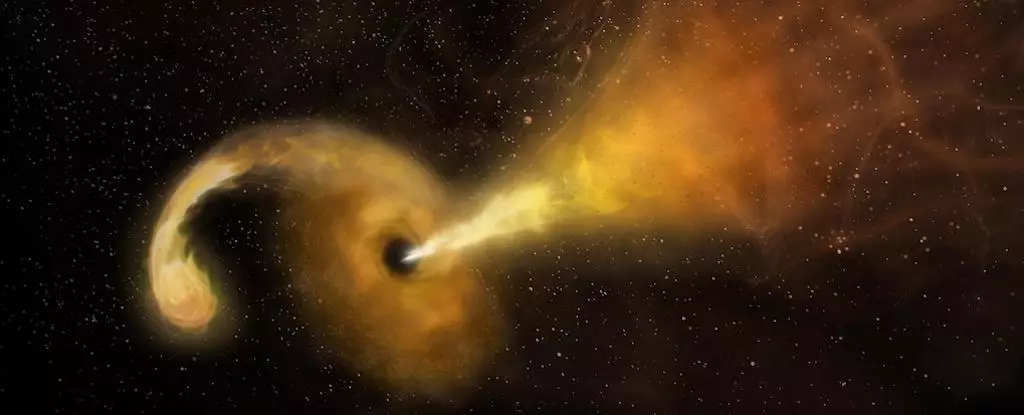On April 8, 2024, astronomers encountered a cosmic riddle that defied existing classifications of astronomical phenomena. Initially detected by the Einstein Probe—a sophisticated X-ray space telescope—this mystery event has since been designated as EP240408a. While at first it seemed to fit the profile of a conventional gamma-ray burst—a category of explosive celestial events known for their intense X-ray emissions—subsequent observations unveiled complexities that painted a different picture. Instead of aligning neatly with existing categories, EP240408a posed an intellectual challenge, urging astronomers to delve deeper into its mysterious nature.
The astronomical community sprang into action following the initial detection. A wide array of advanced telescopes—including those on the ground and in orbit—turned their attention to the anomaly. Instruments like the Nuclear Spectroscopic Telescope Array (NuSTAR) and the Very Large Array (VLA) coordinated observations across multiple wavelengths, including ultraviolet, optical, near-infrared, radio, X-rays, and gamma rays. This collaborative effort illuminated the event’s peculiarities. Each wavelength provided snippets of valuable data, but collectively, they raised more questions than answers.
Notably absent in the observatory’s extensive examinations was the typically expected radio emission—something astronomers had predicted would accompany the event. According to Brendan O’Connor, an astronomer at Carnegie Mellon University, the initial findings suggested that EP240408a did not fulfill the characteristics of any established cosmic event. “When we see something this bright for this long in X-rays, it usually has an extremely luminous radio counterpart,” he remarked, underscoring the peculiarity of the observation.
After rigorous analysis and careful elimination of potential explanations—ranging from quasars to fast blue optical transients—researchers have leaned towards a compelling hypothesis. The leading theory posits that EP240408a may represent a tidal disruption event (TDE), a phenomenon wherein a black hole unfavorably and violently interacts with a star. More intriguingly, the team’s research suggests that the explosion may be the result of a medium-sized black hole shredding a white dwarf, unleashing jets of material directed right at Earth.
This scenario, if correct, would indicate that we are witnessing a previously unobserved variant of cosmic behavior. Tidal disruption events indeed create luminous displays of light, especially in softer X-rays, as the compact remains of stellar matter are devoured. However, what makes this case particularly captivating is the absence of expected radio signals. In previous TDE occurrences, the jets produced typically emitted detectable radio waves, leading scientists to conclude that either an unprecedented event has transpired or that the process is still unfolding.
One possible explanation for the absence of radio emissions lies in the timing of the observations. Researchers theorized that EP240408a might have been observed too early in its life cycle, as radio emissions can take a protracted period—sometimes hundreds or thousands of days—to emerge after the jets are formed. In this scenario, the bright X-ray emissions are akin to the first act of a cosmic drama, with the more subdued radio signals potentially representing a sequel yet to be unveiled.
If subsequent observations reveal these radio emissions, the mystery of EP240408a could transition from an enigma to an instructive lesson in cosmic dynamics. On the other hand, if silence continues to prevail in the radio spectrum, it would solidify the notion that EP240408a might represent a completely new category of transient event, challenging the current paradigms of astrophysical phenomena.
EP240408a is a reminder of the vast and intricate tapestry of the universe and the roles that transient events play within it. The cosmos teems with energetic bursts instigated by stellar phenomena, black holes, and dying stars, each significant in its own right. Understanding these events involves piecing together a complex puzzle, where every new discovery serves to decant the truths about our universe further. While EP240408a may have introduced a myriad of questions, it also illustrates the relentless curiosity and resilience that drive astronomical inquiry.
Conclusively, as scientists persist with their explorations, the eventual unveiling of the nature of EP240408a could serve to either cement existing theories or pave the way for revolutionary ideas that redefine our understanding of cosmic events.


Leave a Reply